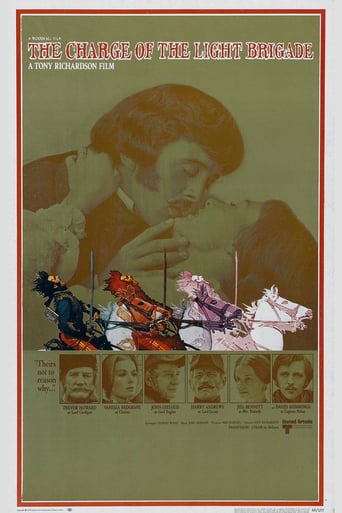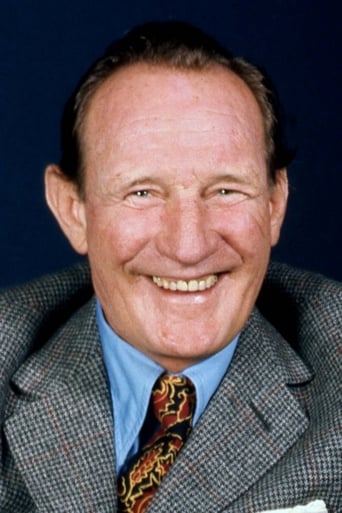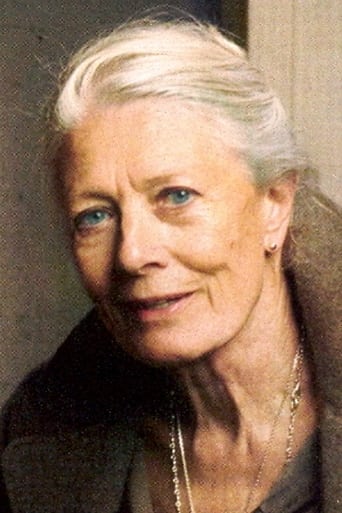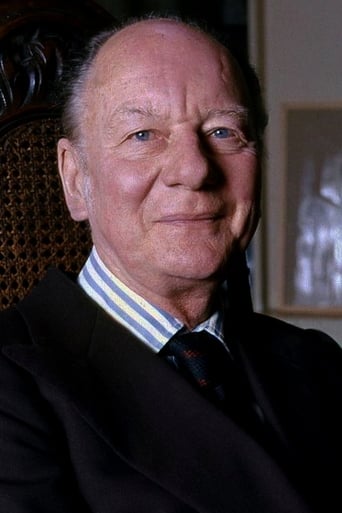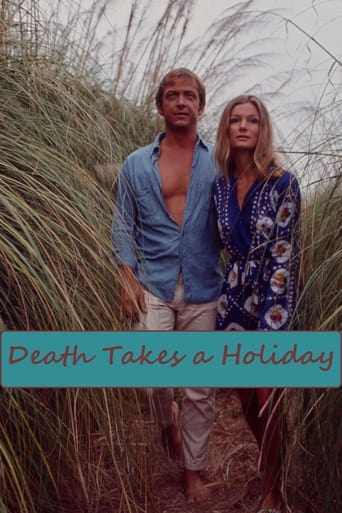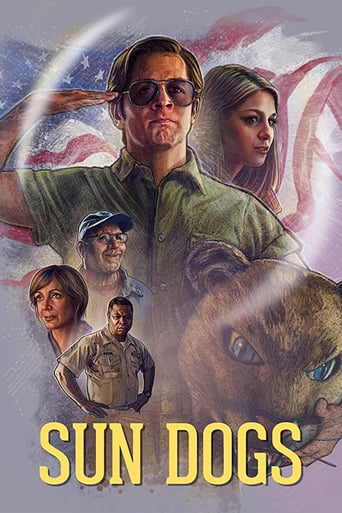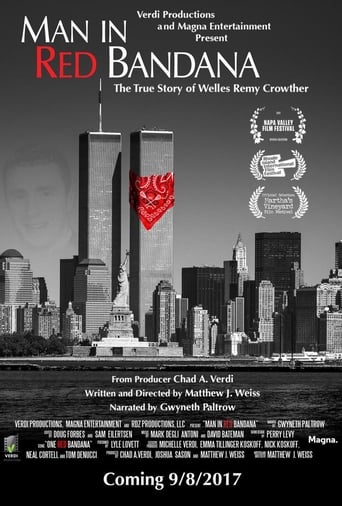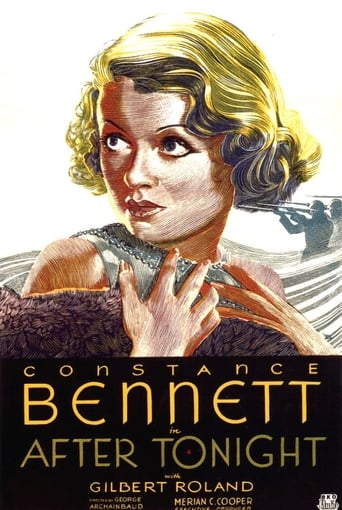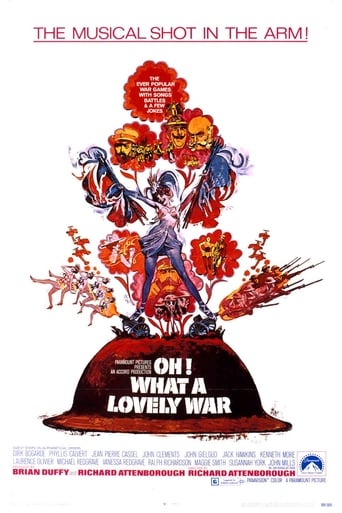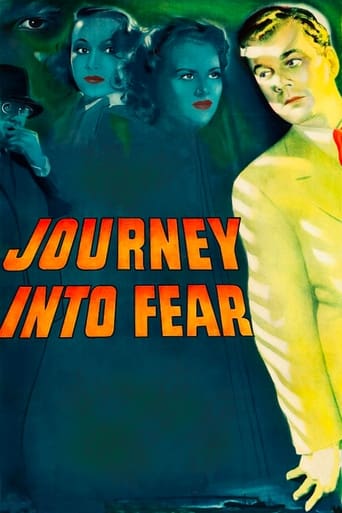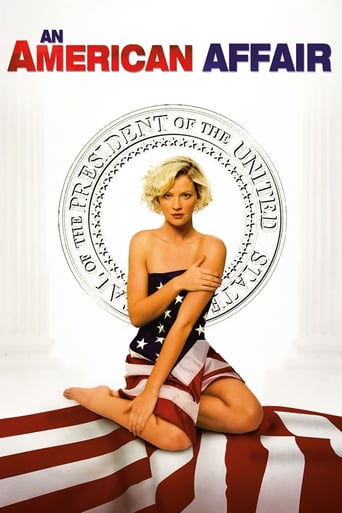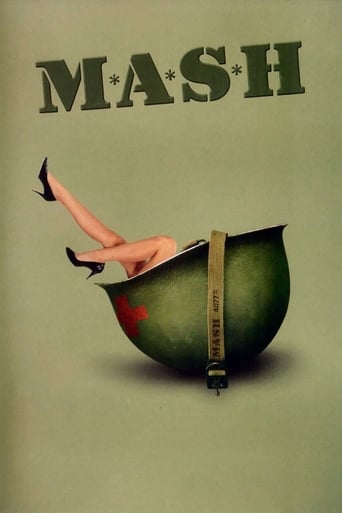The Charge of the Light Brigade (1968)
During the Crimean War between Britain and Russia in the 1850s, a British cavalry division, led by the overbearing Lord Cardigan, engages in an infamously reckless strategic debacle against a Russian artillery battery.
Watch Trailer
Cast


Similar titles
Reviews
Thanks for the memories!
Powerful
A waste of 90 minutes of my life
This is a gorgeous movie made by a gorgeous spirit.
Awful movie. Just plainly awful. I do not know even where to begin. The whole feeling is set wrong, from the very beginning, with all its silly and utterly unnecessary cartoon segues, the film takes a wrong pace and never gets it right. The thick British accents are at least tiresome, and often they sound false. OK, maybe this is how the filmmakers wanted to show the false atmosphere of the upper class people, maybe. Nut it is all so overwrought and exaggerated that it serves all the wrong course. Vanessa Redgrave may be sweet there but never captivating. Two endless hours linger and drag till the war begins. And then, huge laughs begin. I never laughed so out loud as when I saw the way they depicted Russian army, and especially Cossack cavalry. Man, those uniforms, those hats, those lancets! Where did they get them? I wonder whey they didn't put bears in ushankas on bikes with jugs of vodka galore. Russian army was not clad like this, and was not behaving like this. The battles are one endless scream and then, most inappropriately, fun. This is so - the battles are simply sunny to watch, as the film crew fails to deliver real suspense and pain. Even the charge at the end is very fragmentary and badly cut. Russians never speak like this and the wording is all wrong. I am ending on one note - this is pathetic mess. Never watch it.
The book THE REASON WHY by Cecil Woodham-Smith is a terrific and entertaining read giving a superb insight into Victorian Military life. It tells the story of George Bingham(3rd Earl of Lucan) and James Brudenell (7th Earl of Cardigan) who both played a major part in the tragic CHARGE OF THE LIGHT BRIGADE. As the film shows, Lucan was in command of the Cavalry Division whilst Cardigan his brother in law commanded the Light Brigade. At the time these appointments where looked upon as being an invitation to disaster because Lucan and Cardigan had a mutual hatred of each other. In short, Lord Lucan would be Lord Cardigan's superior officer and because they did not even speak to each other, it was felt that things would not go too well. The always excellent Harry Andrews plays Lord Lucan and Trevor Howard gives a excellent performance as Lord Cardigan. John Guilgud amusingly plays Lord Raglan who was the Commander-in-Chief of the Army. Not so amusing however, was that Lord Raglan who had spent most of his time behind a desk,had never before commanded an army in the field and was responsible for the four amateurish orders which resulted in the fateful charge. Another player in the disaster was Captain Nolan who handed the final order to Lucan. Nolan was a fanatical cavalry man who was desperate to see the cavalry in action. Nolan is played by David Hemmings. This film gives excellent period detail of Victorian times and also the horrors of war. The film starts with the build up to the Crimean War and highlights the difference in lifestyle between the upper class and the lower class. One minute we are in the middle of a grand dance with ladies and gentlemen in ball gowns/suites and then we are in squalor streets. A fictional love affair between Capt. Nolan (Hemmings) and Clarissa(Vanessa Redgrave) the wife of Capt.Morris who is a friend of Nolan takes place. Eventually war is declared and the rest of the action takes place in the Crimea. The first class soundtrack is by John Addison with the opening rousing main title being belted out by a full chorus of singers. On the LP soundtrack Manfred Mann sing a version of the famous Tennyson poem which I do not think features in the film. There are at various times animations by Richard Williams which I thought worked quite well. I remember Tony Richardson stating that he did not make this film as an epic but more of a social history of its time. Footnote: There was also another cavalry charge which took place in the Crimea and this was THE CHARGE OF THE HEAVY BRIGADE. The Heavies who where commanded by General Scarlett consisted of approx 500 men and they charged at between 3,000 - 4,000 Russian cavalry scattering them. Had the Light Brigade followed up on this charge the result may have been the complete rout of the Russian Cavalry. Sadly this successful action is completely forgotten due to the disaster of the Light Brigade.
Much has been written on the ill fated charge at Balaklava,& therefore pointless to mention it's course in history, learn-ed reviewers have already covered this ground. It's Richardsons charge sequence which for me,is both exciting,& yet infuriating. Technically for a movie that spent along time in production, something approaching 3 years, uniform wise it is inaccurate. This, if your a student of history is like making a western with General Custer brandishing a Magnum 44. Technical advisers John/Andrew Mollo were mortified that after years of sourcing uniforms & equipment Richardson insisted that the 17th lancers were clothed in the red breeches of the 11th Hussars (Lord Cardigans regiment).He insisted this was for artistic reasons and that the Mollo's should pursue their own 'boringly accurate movie' if they were unhappy. Stunt co-coordinator Bob Simmons was unhappy that a number of exciting horse & rider stunts, some involving stunt men to be blown thru the air via air ramp were dismissed out of hand. War in the middle East robbed Richardson of his Turkish Guard Cavalry, (playing the Light Brigade), & David Watkins cinematography craftily conceals most of this shortfall. However there are a number of battle scenes shown in various trailers, that do not appear in the final cut. Time plays tricks, because when I saw the movie in 1968, I seem to remember some sequences during the charge which are not on the DVD R1 or R2. For a movie that portrays the infamous ride into history, Richardson only seems to dabble with it. One critic called it an 'anti epic'. This for me is why this really good film, could have been a really great film, because the charge should have been the last word in epic action for its time. It had all the right people to have created it. Ultimately a sad missed opportunity.However
Tony Richardson elects to go with Cecil Woodham Smith's historically accurate book instead of Tennyson's glorifying poem in this version of the oft filmed Charge of the Light Brigade. It is a sprawling epic richly constructed, sumptuously photographed (with some splendid animation interludes) and well acted by a prestigious cast but its lumbering pace removes the urgency from the the build-up and the film staggers.Brigade's anti-war theme deals with the unvarnished state of the military and the disparity between officer and enlisted man leading up to the climactic battle. Officers who live comfortably are petty, vain and incompetent while the enlisted live in cramped unhealthy hovels. It is only on the parade ground or assembling on the battle field they mix as a cohesive and splendid looking unit and Richardson remains intent on getting this across. Trevor Howard and Harry Andrews as the bickering and bumbling officers Cardigan and Lucan are magnificently and maddeningly vainglorious while John Gielguld leads with reticent senility forgetting at times what war and enemy he's fighting. David Watkins lush photography along with David Walker's costumes captures both the romance and the squalor of the Victorian period. The folly of the charge itself is dramatized to maximum effect as it cuts back and forth from the command post and the mayhem in the valley with officers blaming each other for the catastrophe. This version of Charge is clearly a metaphor for it's time (1968). Richardson intently lays his message on thick by portraying the entire officer corps as insensitive and imbecilic posers. The film is closer to the truth and sees the charge for the avoidable tragic waste it is but slows down too often to hammer home its point.

